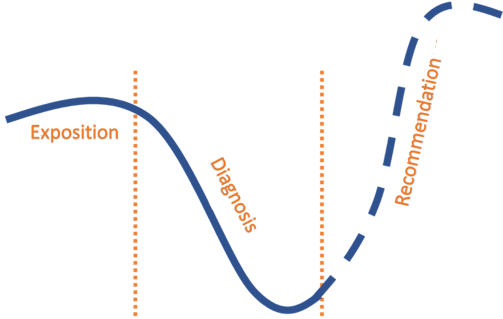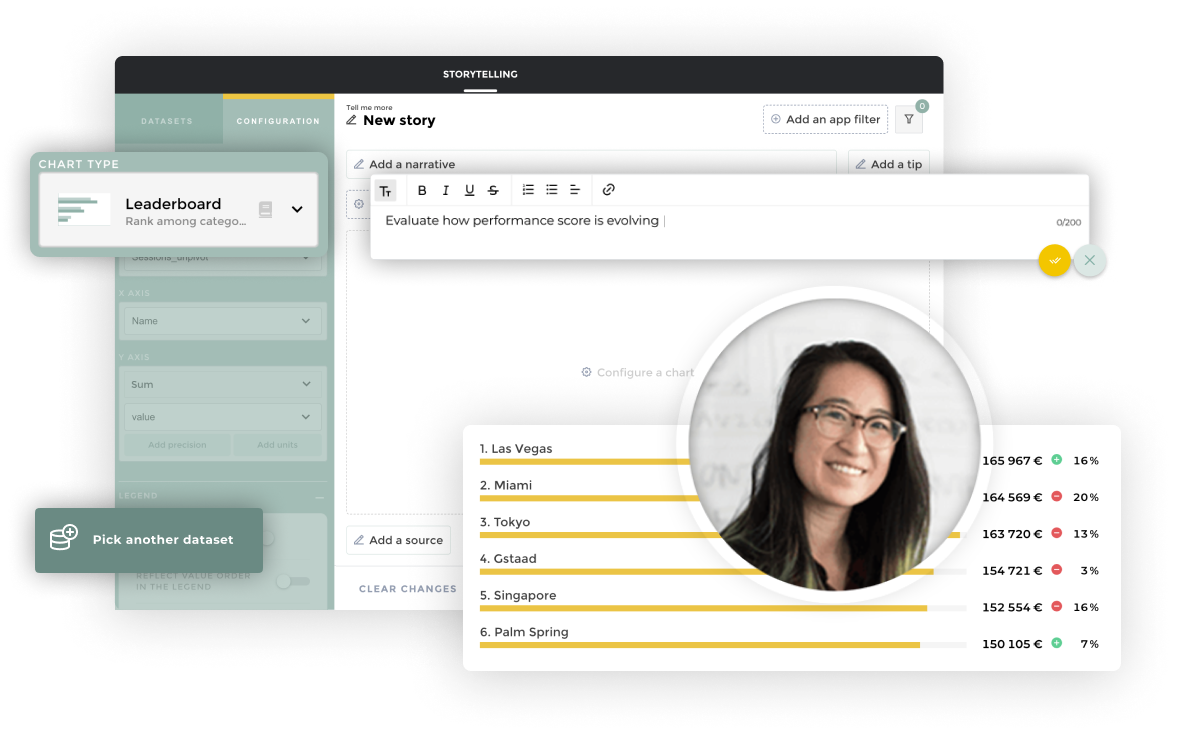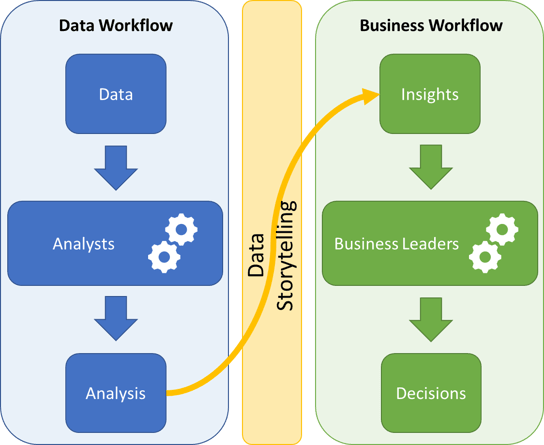Unused data doesn’t provide value. Ignored data doesn’t provide value. Data no one can understand doesn’t provide value. Data only becomes valuable when it facilitates a service or influences a decision that has a tangible impact on the business.
Despite the billions of dollars, companies spend on data infrastructure every year, most don’t get the full value out of their data. Why? Because the data has too little impact on actions. Too often data analyses focus on the data in and of itself when they should focus on the “so what” impact on the business. Using a data storytelling framework can help analysts close the last mile between data and value by leading them to make explicit the connection between data-driven insights and business actions.
Telling a Data Story
The term data storytelling can mislead a little. Yes, it involves placing data into a narrative structure, but the structure for a data story is a little different from the one you may have learned in school. The traditional narrative has an exposition, rising action, falling action, and conclusion. The data story revolves around an exposition, diagnosis, and recommendation.

Figure 1. The Narrative Flow of a Data Story
The Exposition: Setting Context.
Just like a typical exposition, a data story exposition sets the scene. It provides the setting for the narrative that’s about to take place. A good data story pulls in business framing to contextualize whatever insight the analyst is about to communicate. This context includes not only historic norms for the data but also business events, or terminology that will be relevant to the story.
In practice, this exposition might take the form of a quick synopsis during a presentation, or notes, links, or annotations for data stories that need to stand alone without a live presenter. Some data storytelling platforms, such as Toucan Toco, let analysts embed business glossary definitions in their data stories to help with this stage.
The Diagnosis: Communicating the Insight.
The next step in the data story diverges from the common literary arc. If the exposition provides high-level context, the diagnosis dives deeply into a specific insight. The diagnosis represents the core analysis. Most analysts are comfortable with this aspect. In fact, a diagnosis is often the only part of a would-be data story that reaches the audience in a traditional report or dashboard.
During this part of the narrative, the analyst communicates what they found in the data that was notable—i.e., what insight warranted telling a story in the first place. It should focus on explaining what happened. Often, the diagnosis takes the form of an annotated chart or other visualization.

The Recommendation: Making it Actionable.
Finally,—and crucially—the data story makes a recommendation. Rather than leaving the consumer of the data story with the “here’s what happened” of the diagnosis, the recommendation ends the narrative by telling the consumer what they should do about it. It is the direct connection between insight and concrete action.
Often, business decision-makers complain they have plenty of data, but they don’t know what they’re supposed to do with it. The recommendation tells them. An analyst who follows the data storytelling framework makes a suggestion about the appropriate response to the insight they’ve identified. The decision maker may not always agree, but it forces the next step by linking the data to business functions.
How an Insight Becomes an Action
A data story is a form of explanatory analysis. Data analysts have their own methodologies for exploring data and identifying insights in the first place. The story comes into play when it’s time to communicate those insights to a decision-maker. As a result, data storytelling becomes the interface between two workflows.

Figure 2. The Position of Data Storytelling
At the end of the day, wise actions create value for the business and foolish actions destroy it. An action's impact on value stems from the fact that it changes something about the business. Analysis for analysis’ sake just takes up resources. Data can improve decision-making by causing it to be evidence-based, but not if it’s kept separate from the business workflow.
Conclusion
Despite repeated investments in new tools, many organizations struggle to realize all the benefits their data could provide. This failure results from a disconnect between data analyses and business actions. A data storytelling approach, which leads analysts to make explicit the relationship between their insights and business functions, can help bridge the gap and improve organizations’ capacity to make data-driven decisions. Data storytelling achieves this by leveraging humans’ natural capacity to ingest information through a narrative. This allows data to actually drive decisions and thus create value.
Written By: Joe Hilleary, Senior Research Analyst at Eckerson Group





.webp)